Subtleties of mounting lamps in PVC panels
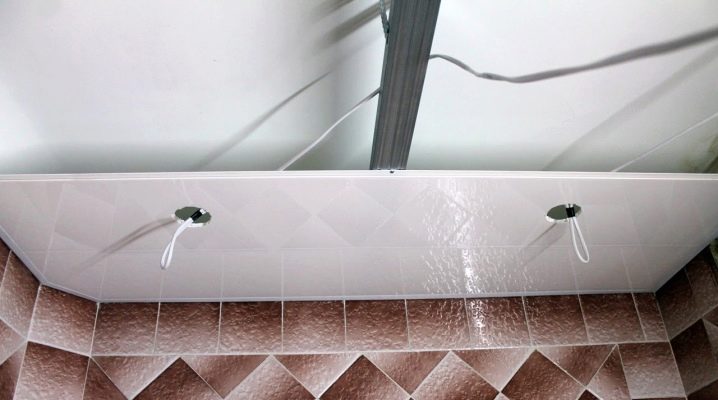
Lighting is an important part of any interior. There are different types of fixtures. For example, point models direct a beam of light towards a specific object. Diffused lighting creates a calm environment. The choice of lighting is not easy, because it often affects the well-being of residents and guests. Consider the intricacies of mounting lighting devices in plastic panels.
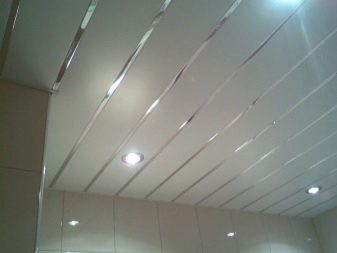

Peculiarities
One of the most popular materials for ceiling decoration is PVC panels. They have many advantages and disadvantages, one of the main advantages is that you can install light sources with your own hands in this system. Plastic is an inexpensive material, so ceilings made of this material are very popular. Installation does not require any special professional skills - everything is quite simple.
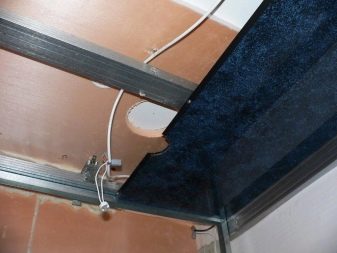
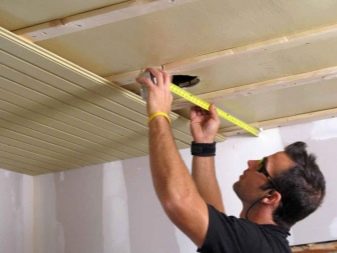
The assortment allows you to choose elements that vary in length, width, color and design. They are divided into several basic types. For example, they can be lightweight and flexible, requiring a special approach and accuracy during installation work. In addition, there are wall counterparts. They are quite weighty and heavy.
Other varieties include:
- glossy;
- with thermal film;
- with patterns like wood or marble.


Separately, one can single out plastic with a beautiful coating, an expensive texture - such panels can decorate even the most expensive interior.
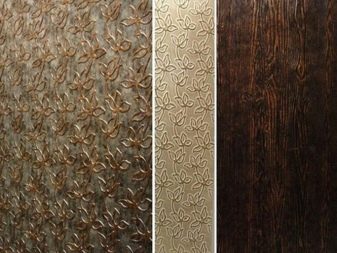
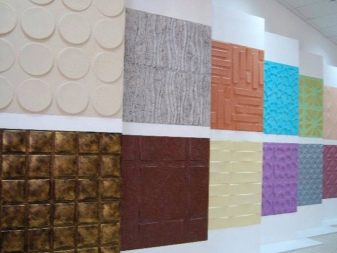
Lighting system
The most important thing to remember when choosing lamps is that plastic melts easily at high temperatures. This spoils the appearance and quality of the plastic. Therefore, you should not choose incandescent bulbs, gas-discharge bulbs will not work either. The ideal option would be LEDs with a power of up to 40 watts. This value was also chosen for a reason: at high power, wires can heat up, they can melt plastic from the inside.

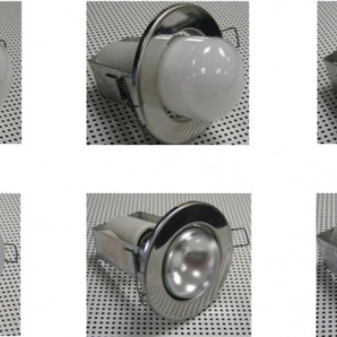
It is best to choose bulbs for such panels with a high level of tightness (IP44 and above). This will allow the use of such lamps in absolutely any room when working with lighting at 220 V. It should be noted that halogen and LED lamps. They only require 12 V. However, you need to know how to properly mount these bulbs. From the panel, power is transmitted to the transformer, and then to the lamps.
The following restrictions apply:
- up to 4 bulbs can be hung on one transformer;
- the length of the wires should not exceed 250 cm;
- as the length of the wire increases, the lamps will shine very dimly.
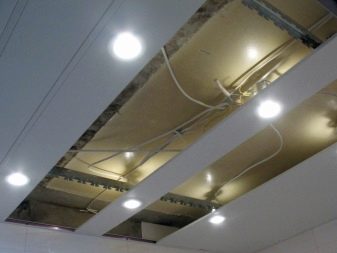
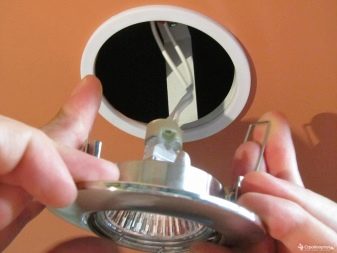
Installation work
Before carrying out work, you need to check if everything is ready. The presence of wires, electrical tape and terminal blocks must be known before starting work. It is also necessary to check the integrity of the switches and the lamps themselves.
- The first step is to choose the location of the lights. It is best to apply precise spots to the ceiling. The main thing is not to select points in those places where the profile or the joint of the panels will pass.
- It is better to start the installation of the luminaires before the ceiling is fully assembled (it is easier to conduct the wiring when only part of the panels are hung). A common problem is the lamp hole. Many, unknowingly, begin to invent any shenanigans in order to get it exactly and in size. Most use a drill with a special bit of a certain diameter. This allows you to make the hole as accurately and accurately as possible. To do this, it is enough to simply work at low speeds without much effort - the plastic will not tolerate either revolutions or mechanical stress.If you don't have a drill, you can use a compass and a utility knife.

- It is necessary to outline a circle with a compass, and carefully cut with a knife. When cutting, it is better to always start cutting inside the circle - mistakes will not be visible, and the evenness of the circle can then be achieved with a minimum of effort, but maximum accuracy.
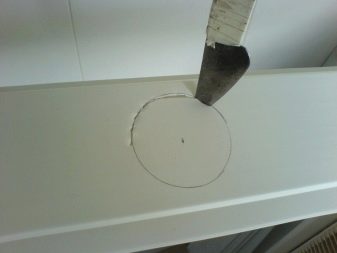
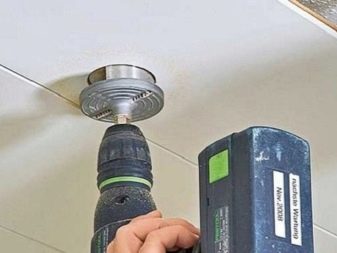
- Work on drilling the hole is not carried out on the installed panel (this is not permissible).
- After the hole is ready, it is necessary to install the luminaire body by snapping it onto the springs.
- Only after these procedures can the panel be installed. Many professional workers recommend inserting the wire into the hole in advance: this will help not to climb or look for the wire after installing the panel. For ease of connection, the wire should hang 150-200 mm. When working with wires, it is necessary to disconnect the entire house from the voltage and have flashlights on batteries.
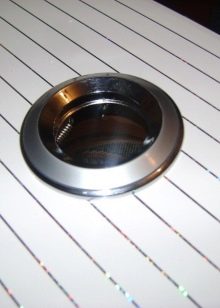

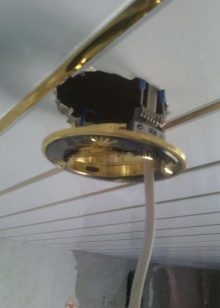
- We remove the insulation from the wires and expose the contacts for connecting the cartridge. If necessary, insulation can be used to connect a wire leading in parallel to the next lamp.
- After attaching the cartridge, the bulb itself is carefully inserted into it. It is fixed with a special bracket, often having an additional thin glass as a mount.
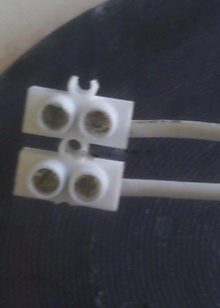
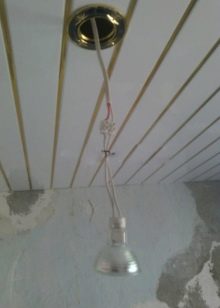
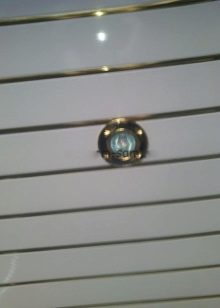
Having chosen the necessary PVC panels and the necessary lamps, you can create any combinations of them on the ceiling. The installation process is simple, but it is necessary to study it and understand the subtleties of the process in order to avoid mistakes.
How to install lamps in PVC panels, see the video below.













The comment was sent successfully.